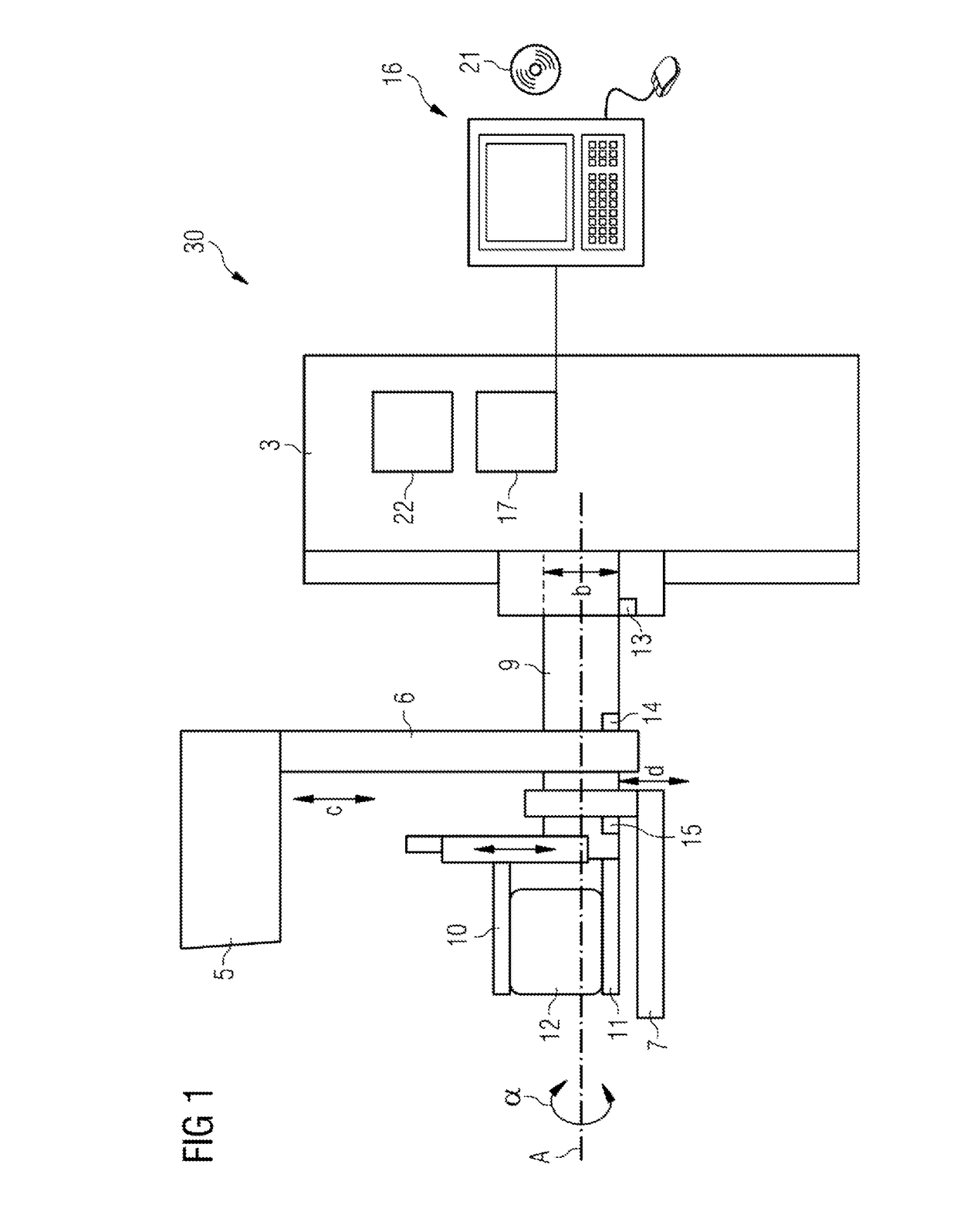Accelerated data capture in an x-ray system
a data capture and x-ray technology, applied in the field of x-ray mammography, can solve the problems of reducing the number of available information about objects, limiting the use of tomosynthesis, and the data capturing time of the ffdm, so as to reduce the reading time, and reduce the number of reads
- Summary
- Abstract
- Description
- Claims
- Application Information
AI Technical Summary
Benefits of technology
Problems solved by technology
Method used
Image
Examples
Embodiment Construction
[0042]In FIG. 1, an x-ray system 30 for mammography examinations according to one or more of the present embodiments, which may also be referred to as a tomosynthesis machine, is schematically represented. The x-ray system 30 includes a carrying arm 9 that is mounted pivotably about a horizontally running axis A in a mounting (compare double-headed arrow or angle α). The mounting is arranged on a stand 3 and is vertically adjustable, as indicated by the double-headed arrow b. Arranged on the carrying arm 9 are an arm 6 provided with an x-ray source 5, an area detector 7 (e.g., FFDM) and a compression device including a compression plate 10 and a bearing plate 11. In FIG. 1, a female breast 12 compressed by the compression plate 10 and the bearing plate 11 is represented in a schematic way. The arm 6 is pivotable about the axis A in relation to the carrying arm 9, the detector 7 and the compression device 10, 11. For height adjustments and pivoting movements, electric motors 13 to 15...
PUM
 Login to View More
Login to View More Abstract
Description
Claims
Application Information
 Login to View More
Login to View More - R&D
- Intellectual Property
- Life Sciences
- Materials
- Tech Scout
- Unparalleled Data Quality
- Higher Quality Content
- 60% Fewer Hallucinations
Browse by: Latest US Patents, China's latest patents, Technical Efficacy Thesaurus, Application Domain, Technology Topic, Popular Technical Reports.
© 2025 PatSnap. All rights reserved.Legal|Privacy policy|Modern Slavery Act Transparency Statement|Sitemap|About US| Contact US: help@patsnap.com



